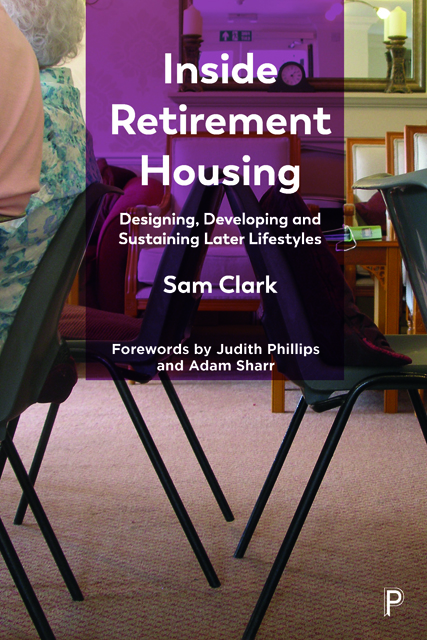14 - Retirement reviewed
Published online by Cambridge University Press: 20 June 2023
Summary
Research anthology
This book has presented a series of research stories reflecting the multivariate positions of actors engaged in the design, construction, management and habitation of retirement housing in the UK. It is an anthology of sorts, comprising stories that offer ethnographic ‘thick descriptions’ of stakeholders situated within their respective sites, settings and subcultures. The stories within Parts I, II and III of this volume could be separated into two alternative categories: (i) those relating to a production context – developer director; architecture student; company architect; town planner, and (ii) those relating to the inhabitation of architecture – baby boomers; vulnerable friend; resident owner; villa manager. The latter group could be said to meet the idea of stories as a means for ‘making sense of both individual experience of architecture and social interactions that take place in it’ (Frascari, 2012), and therefore have potential to feed into future stories in support of making age-friendly architecture. Certainly it is hoped that this work will enable different stakeholders and/ or disciplines within the retirement housing sector, including divisions within companies and organisations, to better relate to each other’s positions, knowledge and everyday practices. Each story contains a multitude of insights that are brought together in this summary chapter in order to help readers make sense of a design world in which we should all be invested.
Part I of this book provided a contextual review of the older-person landscape in the UK. It contained two stories that recounted the contrasting positions and experiences of persons with and without financial reserves and, therefore, differing degrees of choice. In Chapter 3, Baby boomers, the Cees were found to be resisting existing retirement accommodation offers; housing options considered ‘not for them’ or at least ‘not yet’. Yet their story revealed a level of unfamiliarity with retirement products in-theflesh; a situation that led the Cees towards misconceptions of retirement housing and inappropriate associations with residential institutions. The Cees also evidenced back-of-mind thinking around vulnerabilities, in terms of future physical and/ or psychological setbacks, and the adaptability of their home environment to meet their needs.
- Type
- Chapter
- Information
- Inside Retirement HousingDesigning, Developing and Sustaining Later Lifestyles, pp. 247 - 253Publisher: Bristol University PressPrint publication year: 2022

